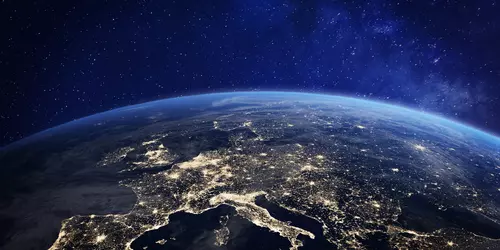The climate year of Europe
Europe is located in the northern hemisphere of the Earth and is part of the Eurasian region. While the weather in southern Europe in Greece, Spain, Portugal and Italy is characterized by hot summers and mild winters, the more northerly regions often experience arctic temperatures during the cold season. The fauna in the different countries varies accordingly. There is great diversity in this respect, especially in Central Europe, where the mild climate is almost always accompanied by sufficient rainfall for lush vegetation. But also culturally and historically, Europe is one of the most exciting regions in the world.
Evidence of early forms of civilization can be found and visited especially in Greece. Then, around the year zero, the Romans dominated large parts of the continent and changed it so permanently that numerous effects of this period continue to this day. In the following Middle Ages, Europe divided into a multitude of states. This diversity of traditions, cultures and languages in a comparatively small area still characterizes the image of this continent today and makes it particularly attractive for tourists. Since the Second World War, modern Europe has been characterized above all by a steadily growing degree of cooperation, after war had mostly dominated the political stage in the centuries before.
General information about Europe
Those traveling through Europe should not limit themselves to its scenic beauty or its many sights. Because in the end, this continent draws its special charm from both aspects. For this reason, excursions to the mountains of the Alps or to the picturesque bays of the Riviera are just as much a part of the experience as the city centers of Europe's major metropolises, which have grown over the centuries. To make a pre-selection here would be to neglect other countries and their capitals. In any case, one should have visited Rome, London and Paris at least once in one's life. All three cities were and are special centers of culture and science. In addition, all three have a fascinating history that goes back a long way.
Rome was the center of the Roman world, which determined the destiny of Europe for centuries from antiquity to the Middle Ages. London was the political center of the British Empire, which at its height was the largest empire in all of human history. Numerous buildings such as Buckingham Palace, the Houses of Parliament or Westminster Abbey bear witness to the ancient importance of the British metropolis. Of similar importance for France is its capital, Paris. The points of interest there range from the Eiffel Tower to Notre Dame and the Louvre to districts such as Mont Martre.
In addition, cities such as Moscow, Madrid, Berlin, Stockholm, Vienna and many other cities offer stays of several days for extended sightseeing tours. In addition, a multitude of coasts and mountains beckon. Many of the corresponding areas have been declared national parks since the last century. Among the most important such parks are Sarek in Sweden, the Sierra Nevada in Spain, the Bialowieza National Park between Poland and Belarus, and Jasmund National Park on Rügen.
Tourism Europe
From January to March, most areas of Europe experience temperatures that are more conducive to extended city breaks than coastal vacations. In addition, a vacation in one of the many ski regions of the Alps is worthwhile. There you will regularly find good winter sports conditions until Easter. From April onwards, it becomes pleasantly warm again in the south of the continent. This is the ideal time for a trip to Greece or Spain. From May on, pleasant temperatures return to Central Europe as well. High in the north, on the other hand, you have to wait until summer before there are really long-lasting higher temperatures again. While winter already returns there in the fall, in Central Europe it brings with it the time of the grape harvest and the colorful leaves. In the south, however, it remains comparatively warm even at this time of year.






























